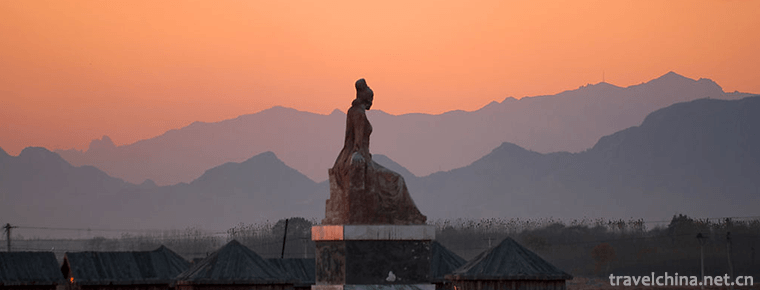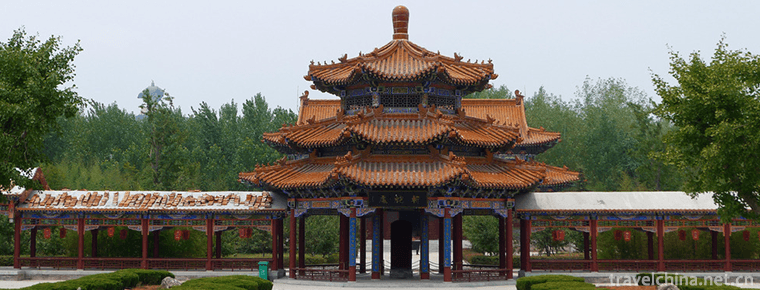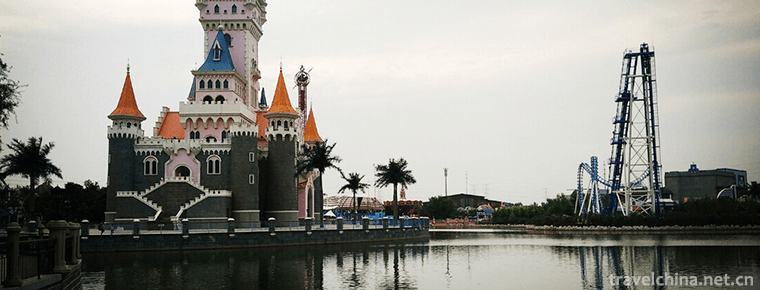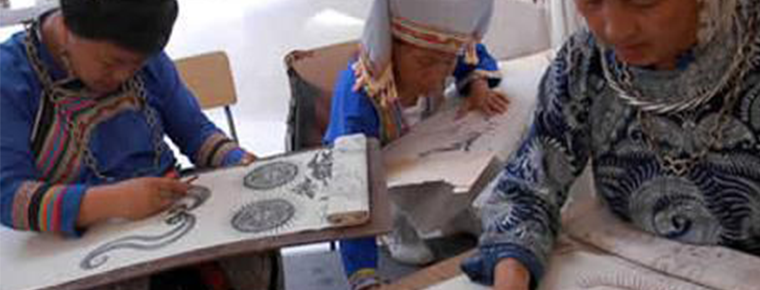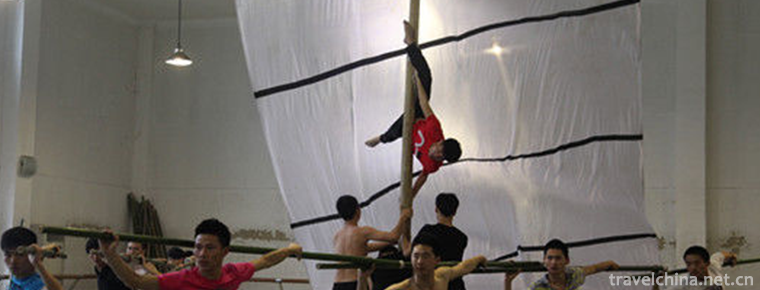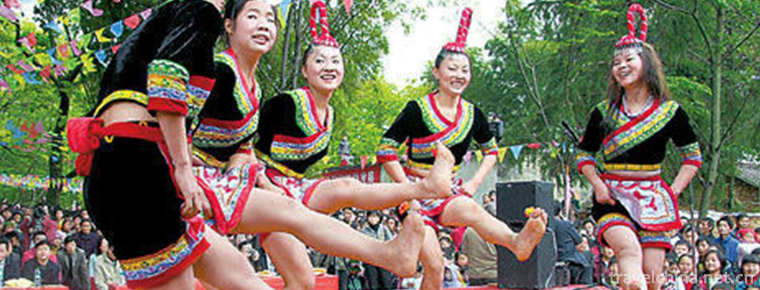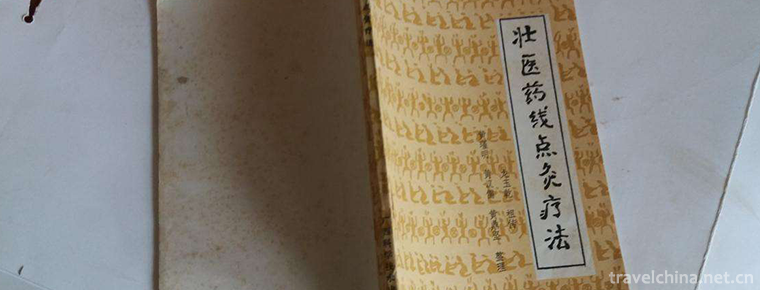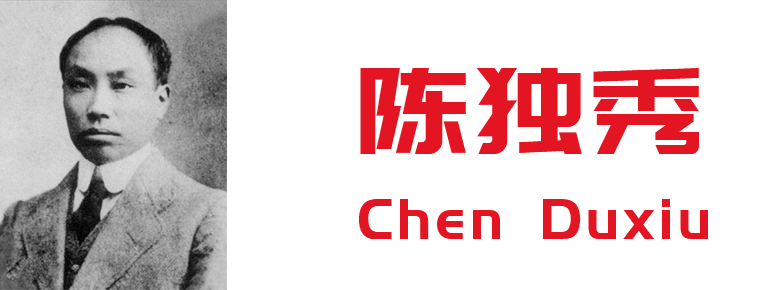Shennong Creek Scenic Area
Shennongxi, originating from the main peak of Shennongjia, flows through Badong County, Hubei Province. It travels from north to south through deep mountain canyons, and converges into the Yangtze River east of Wuxia Estuary. Shennong River is a typical Canyon stream, with tightly packed peaks and steep cliffs on both sides. The stream collides with the knife-like gorge wall, and the channel is tortuous. There are more than 60 dangerous, long, curved and shallow places in the turbulent stream. Although the waterway is narrow but shallow, the drifting is very exciting and safe.
In December 2015, Shennongxi Tourist Area was selected as one of the 30 best new tourist landscapes in the Three Gorges of the Yangtze River.
Shennongxi Fiberman Cultural Tourist Scenic Area is a scenic spot with excellent natural and cultural scenery in central China. It occupies an important position in the tourism pattern of the Three Gorges Region and Wuling Mountain Area. The development of the scenic spot began in 1989, opened to the outside world in 1991, and was rated as a national 4A-level scenic spot in 2002 after more than 10 years of development and construction. After five years of development and construction, the Shennongxi scenic spot successfully realized the transformation from Canyon Scenic Tourism to both Pinghu and Canyon Scenic tourism, and retained the primitive primitive retrograde water pulling fiber. Since 2004, it has been continuously awarded the "Top Ten Scenic Spots in Hubei Province" and in 2008 it was awarded the National Scenic Spot. In 2008, the water level of the Three Gorges Reservoir was 175, and Shennongxi Scenic Spot entered the stage of transformation, development and construction again. Now it has been rated as the national 5A class tourist attraction.
Shennong River has four gorges: Longchang Gorge, Nautilus Gorge, Shennong Gorge and Mianzhu Gorge. The four Gorges have different landscape styles, which are either steep, beautiful, deep or magnificent. They constitute the whole beautiful and magnificent landscape style of Shennong River. During the drifting journey of more than 60 kilometers in Shennong River, there are more than ten magical natural scenic spots, such as Shennong Peak, Jiukongyan, Yuquan Waterfall, Shennong Hot Spring and Yanzidong. At the same time, along the way, there are many humanistic landscapes with strong Tujia flavor: gentle and melodious folk songs, hanging-feet buildings built according to the mountains, which are located in the caves on the rock wall. The hanging coffin of the cave, the rolling mill, the bride who is going away gradually... Heavy mountains and rivers, beautiful scenery overlapping. Shennongxi Fiberman Culture Tourist Area is a natural eco-cultural tourist area with Shennongxi as its main axis, natural ecology as its support and Fiberman culture as its soul. It links Yichang Three Gorges Dam in the east, Wuxia Gorge in the west, Shennongjia Nature Reserve in the north and Zhangjiajie in the south. It is not only the central point of the Three Gorges Tourist Area of the Yangtze River, but also the "one river" in Hubei Province. The node of the tourism circle of the two mountains (Wudang Mountain and Shennongjia) and the important fulcrum of the eco-cultural tourism circle in Western Hubei.
Tracker culture is a regional culture formed by the long-term forging and accumulation of trackers in the Three Gorges region of the Yangtze River, especially in the Shennongxi River Basin. The core essence of the culture is the team spirit of concerted efforts, the fighting spirit of fearlessness of hardships and the enterprising spirit of striving for the upper reaches. The culture of towerman advocates loving life, respecting nature and treating the environment well. While actively pursuing the value of life, it also needs to treat the cycle of life rationally. For thousands of years, the people of Shennongxi River Basin and its surrounding areas have multiplied and thrived under the shade of the tracker culture, singing and dancing.
Entering Shennong River, you will be overwhelmed by cultural scenery: Badongtang Opera, which is classified as 380 local operas in the whole country, has a beautiful story, a loud and bright tracker's horn expresses the call for life, a rough and heroic Sayer expresses the memory of the past, and a vivid shadow replicates the Golden Golden Horse. Passion, people here live as a play, play as a life.
Shennong Creek is famous for its cultural scenery. Modern cultural people who live in the city also rush to Shennong Creek to fill in lyrics, write poems, rehearse plays, make movies, and the song "The Love of the Tractor" comes from here. Sayer Haw, winner of the 14th CCTV Green Song Competition, comes from here, as well as a tracker and tour guide. Buffett, the world's richest man who has visited Shennongxi, remembers and invites them to be guests of his talk show.
Drifting Shennong River is a kind of canoe commonly known as "pea horn". This kind of canoe is unique to Shennong River and is one of the three most primitive waterborne vehicles in the world. In the "Pea Corner", the landscape of Shennongxi Gallery presents one by one, with splashing waves, retreating mountains, birds circling, and folk songs. If you are lucky, you can also witness monkeys'hip-hopping and Sweet Sheep climbing on the shore.
Shennongxi Fiberman Cultural Tourist Area has been rated as a national 5A tourist attraction, and it has become one of the five national 5A tourist attractions in the whole province, and the only national 5A tourist attraction in Enshi Prefecture at present. Badong County attracts the attention of tourists both at home and abroad by hosting the "China Three Gorges Tracker Cultural Tourism Festival" and other ways. Tourists come from more than 30 countries and regions in the world, and inbound tourists rank among the top three in Hubei Province in the past three years.
As early as the Tang Dynasty, the poet Du Fu once drifted across Shennong River and left a well-known poem: "Go out of the long snake in the long distance and embrace the wild teeth in the village of Jiang." Lanzhou Dragon Cave House, a few cottages and wildlife. Nowadays, Du Fu's heroic, strange, dangerous and beautiful scenery of mountains and rivers will surely attract more tourists to Shennongxi, experience the culture of trackers, and enhance the attractiveness of scenic spots and market influence.
Weather characteristics
The climate of Shennongxi is based on subtropical monsoon climate. With the increase of altitude, there are many types of climate, such as warm and wet zone, middle temperature zone and cold wave zone. The temperature in Shennongxi is extreme low-21 C and extreme high temperature is 38.5 C.
Main attractions
Mian Zhu Xia
In the dangerous Mianzhu Gorge, caves are everywhere on the cliffs which are difficult to climb, huge stalactites hang overhead, the riverbed is narrow and the drop is large, and there are more than 30 dangerous beaches in the 4 km waterway. Drifting by boat, with all the skill of boatmen, makes people heartbeat, but it is breathtaking.
Parrot Gorge
The Nautilus Gorge is the most beautiful of the three Gorges. The vegetation on both sides of the Strait is hanging like a winding, evergreen all the year round, seepage of rock and water droplets, waterfalls and springs, and spectacular scenery appear repeatedly. There is a section of canyon, no matter in the mid-winter or hot summer, you can see flowers in full bloom, so it is called "Nianhua Beach". There is a place of "nine strands of water", where springs at the edge of the stream gush out many strands of water, distinguishing, turbid and mixed three colors, named "three colors spring".
Long Chang Dong Gorge
The last Canyon of Shennongxi is Longchang Tung Gorge, which is less than 20 meters wide in confrontation. The vertical water on both sides of the river is continuous and tortuous up to more than 5,000 meters. There is a great hero of the Huotang Gorge. Along the way, we can see the humane landscape - Yan Coffin Group and the ancient trestle road. There are many small caves on the extreme wall 150 meters above the water surface on the East Bank of the Gorge. Rock coffins are placed in different depths and visible to the naked eye. Shennong River is a natural stream without pollution. Its water is clear and clear. Apart from the "three-color spring", there is hardly any mixed water. The bottom of the stream is covered with colorful stones like flowers. Turbulent water flows like snow and fog, boats fly like flights; slow water forms a quiet lake, unpredictable green, flat boats ripple; shallow water below knees, the bottom of the boat rubs against the pebbles in the river, sound, all by pulling.
Pea horn
The boat drifting Shennong River is shaped like a half-opened pod. The local people call it "pea horn". It is small and light. It is made of hard and wear-resisting oak wood. It has large buoyancy and shallow draft. It can travel in shallow water below knees. "Pea Pork" is totally manned. Each boat needs six boatmen. Shipbuilding is the most important part of Shennong River landscape. Shennong Creek is in danger of rapid floodplain. There is hardly any place for boatmen to stand on cones. They all need to Wade and pull fibers. The "head fibers" in front and the "captain" in the stern of the boat take the lead in shouting and roaring. The sound shocks the canyon, and the boatmen echo before and after, and pull up the beach with their voices. When launching, the boat collides in the zigzag channel. The captain controls the direction of the boat with a pole in his hand. The boat runs fast in the turbulent water, and the heartbeat of the passengers in the boat is like a drum.
Tujia Minority Village
Shennongxi passes through two small Tujia villages. Villages hidden in Phoenix Tail bamboo, banana leaves, citrus forest and tallow trees are like paradise. Here, the river is quiet and the colorful stones are full of beaches. Visitors can rest in the suspension tower, or swim, or pick up stones, or go to the village to visit the ancient and primitive water mill, stone mill, watch Tujia's rugged Bashan dance, folk songs, taste, Valley wine and Tujia food.
Surrounding attractions
Shennongjia
Founded in 1982, it was upgraded to a National Nature Reserve of forest and wildlife types in 1986. In 1990, it was accepted by UNESCO to join the World Biosphere Conservation Network of the Human and Biosphere Project. The total area of Shennongjia Nature Reserve is 70467 hectares, which is over the mountains of Southwest China and the hills of central China. The transitional zone, which belongs to the extension of the Daba Mountains, has a typical geological structure of the Late Precambrian and a transitional zone from the north subtropical zone to the central Asian zone. It preserves relatively intact primary and secondary biological communities and is an ideal place for studying biodiversity, typicality and natural succession of vegetation. The flora and fauna of southwest, central, south, north and northwest China converge, which includes half of China's plant species and three vertical distribution types: subtropical, warm and cold temperate.
Shennongjia Nature Reserve is famous for its rolling hills, high terrain and horizontal rivers. The Xiangxi River, which is famous for Zhaojun's story, originated from it. Because of the complex terrain and abundant rainfall, the microclimate features are very obvious, and the relative height difference is very large, which has created many beautiful and peculiar natural scenery. Many living fossils of animals and plants survived the invasion of glaciers in the third and fourth periods multiply here. There are many strange caves and flowers and plants, which have high ornamental value. There are more than 250 kinds of wild flowers. According to incomplete statistics, there are 336 species of terrestrial vertebrates, 200 species of birds, 30 species of amphibians and reptiles and 27 orders of insects in the protected area, accounting for 81.8% of the insect species in China. There are 40 species of rare wild animals under state protection, including Golden monkeys, leopards, South China tigers, storks, golden eagles, giant salamanders and lagoons. Among them, golden monkeys are endemic to giant pandas in China. They are mainly distributed between 1000 and 2800 meters above sea level in the reserve, spanning coniferous forests, broad-leaved forests and mixed forests of three vertical vegetation belts. Among them, its research has always been a key scientific research project. White bears, muntjacs, white monkeys, white snakes and other albino animals have been found in the reserve.
Wooden fish Scenic Area
Xiaodangyang is about 15 kilometers east of Dashennongjia. Qifeng Qiling Mountain, towering green drops, nearly 2000 meters above sea level, is one of the places where thousands of ancient trees are located. There are branches vertical and horizontal, old and stubborn Ma Lingguang, tangled mistake, rare Coca-catching trees of Longzhong, Fengjian ancient quintessence, 2-meter-diameter maple poplar, lofty, up to 50-meter-high fir, with a crown covering more than 1 mu of thorn autumn, hollow stems, white fruit trees that can be used as cow rings, and so on. Especially the hemlock standing on the back hillside is sturdy and tall. Its trunk is as strong as bronze, clanking and rusting. The tree body is covered with moss marks. If the ancient bronze wares are mottled with rust clothes, they are condensed with thousands of years of wind and frost. This tree is endemic to China. It has a height of 46 meters, a diameter of 2.38 meters, a chest circumference of 7.5 meters, and a village area of 88 cubic meters. It is difficult for six people to embrace each other.
Altar of Shennong
Shennong Altar is located in Muyu Town, Shennongjia Tourism Open Zone. It is the South Gate of Shennongjia Tourism and also the central tourist area. The famous Xiangxi River slows down its southward flow. The whole scenic area is surrounded by mountains, beautiful and quiet, attracting countless Hong Kong, Macao, Taiwanese and overseas Chinese to seek their roots and worship the ancestor of the descendants of Yan Huang, Emperor Yan Shennong. The scenic spots are divided into five parts: the main sacrificial area, the ancient botanical garden, the Millennium Chinese fir, the Butterfly Herbarium and the Bell-Chime concert hall. Shennongjia was once a place where Shennong's ancestors tasted herbs and gathered herbs. In order to commemorate his great achievements in life and let the descendants of Yan and Huang worship from generation to generation, an altar was built in this geomantic treasure land.
The main building of Shennong Altar is a giant statue of the head of a cow in Shennong. The statue is 21 meters high and 35 meters wide, adding up to 56 meters, to show the close unity and prosperity of 56 ethnic groups in China. Standing between the green mountains, the statue takes the earth as its driving force, closes its eyes slightly, penetrates into the autumn, and seems to be thinking about the universe. In the sacrificial area, the circular and square patterns representing heaven and earth are stepped on at the foot. In the square patterns of the representative places, the five colored stones are gold, wood, water, fire and earth in the theory of five elements. Nearby, totem poles 10 meters high stand on the left and right sides of the altar. The heads of the cattle on the poles show Shennong as the head of the cattle, which means the descendants will multiply. There are two large reliefs in front of the totem pole, which show the great achievements of Shennong's life. Between the two reliefs, there are Jiuding Bagui (the highest sacrificial vessel of the Chinese nation for cooking in ancient times) and Zhonggu Tower for the descendants of Yan and Huang to worship their ancestors and seek refuge. Up to 343 steps, they came to the statue's viewing platform (the place where the Son of Heaven was sacrificed in ancient times).
Beautiful legend
Legend has it that human beings are still in the ancient times when Rumao drank blood. The epidemic is prevalent. All over the world, there are continuous mourning and starvation. In order to save the people of Li, Emperor Yan Shennong came to the dangerous alpine forests in Northwest Hubei, tasted hundreds of herbs, collected medicines and cured diseases, and selected sowing fields. But no matter how big Shennong's magic power is, it can't be.
Climbing the cliffs that soared into the clouds, he built thirty-six ladders and climbed the cliffs where they stood. Later, a dense virgin forest grew up where they stood. In order to miss him, people call this world-class Forest Park Shennongjia.
After traveling all over Shennongjia's dense mountains and tasting all kinds of grass, Shennong wanted to take the Yangtze River through Dongting Lake and then across Xiangjiang River. When he came down from the top of the mountain, he found a winding stream blocking the way. Because Emperor Yan was not good at swimming, when facing the unceasing stream, he suddenly floated a raft from upstream. Emperor Yan was overjoyed and jumped onto the raft, drifting the stream smoothly, and arrived at the Yangtze River. Later, people called the stream which Shennong used to drift down the mountain "Shennong stream".
Mystery of savages
In Shennongjia, the source of Shennongxi, and Xiaoshennongjia in Badong, a monster is widely spread. People say: She has a shaggy head, prominent forehead, naked red hair, long body, giggling, rude and barbarous, and secretive actions. People call her "Red-haired Savage".
This "savage red-haired man" has a lonely personality and likes to catch people without being polite. Legend has it that once a person is caught by it, it is difficult to escape. People try to prevent it.
Suddenly attacked, when entering the mountain, both arms must take bamboo tube. If you meet with it, let it catch the arm with bamboo tube. At this time, the "savage" was overjoyed and laughed. At the moment when the "savage" laughed wildly and forgot his form, the captured man quickly pulled his arm out of the bamboo tube and tried to escape for his life. When the savage stops laughing and wakes up, all he leaves in his hands are two empty bamboo tubes... In the world, there are rumors of "savages" in several countries. In the United States, the "savage" is called "Shaskaz", commonly known as "Bigfoot Monster"; in India and Nepal, the "savage" is called "snowman"; in Central Asia and Mongolia, the "savage" is called "Almas"; in Siberia, it is called "Churchuna"; in China, for thousands of years, a mysterious shadow has been shrouded. In people's minds, lingering. Nobody knows what it is. In the mountainous areas of Northwest Hubei, savages have been recorded in the local chronicles of past dynasties. According to eyewitnesses, some people saw the "savage" in tears, and some "savage" clapped hands to "savage" to show friendship. Historically, Liu Zongyuan of the Tang Dynasty recorded that "chimpanzees, human faces, can speak and laugh"; Quyuan, the great poet of the Warring States Period, wrote in his poem Jiuge Shanghui: "If someone is a mountain gorilla, he is led by a female Luo by a pulpy. It's both shy and noisy. Zi Mu is kind and graceful. What on earth is the Mountain Ghost of "sentimental and laughable"? The place where mountain ghosts haunt happens to be the ancient Chu area, which refers to the area of Hubei. It can be seen that the place where mountain ghosts occur is consistent with the area where "savages" live.
Specialty
Mushrooms
Log mushrooms from Shennongjia Mountains, Hubei Province, not only smell very fragrant, but also taste very delicious. They are usually bought in bags. Log mushrooms grow naturally on wood in mountainous areas of Hubei Province and are dried naturally by the sun, so they are better than the mushrooms sold on the market.
Chinese herbal medicine
The primitive and barren Shennongjia, Jingxiang in the east, Bashu in the west, Yiling in the South and Wudang in the north, with its unique geographical environment and climatic conditions, has become a place where a variety of flora and fauna components are contained. It is known as the "natural botanical garden", "natural zoo", "plant and animal germplasm gene bank", and it also contains poles. Rich resources of Chinese herbal medicine, known as the "Kingdom of Chinese herbal medicine". In addition to the traditional Chinese medicines which are widely used, there are also folk herbs with peculiar curative effects. The folk herbs have strong regionality, unique naming, remarkable curative effect, abundant medicinal resources and great potential for developing new medicines.
Wild walnut
Walnuts are rich in protein, vitamins, mineral elements and oil. They are rich in nutrition. The oil in walnuts is mainly unsaturated fatty acid, which is very useful for softening the human vascular wall and preventing vascular rupture. Frequent consumption has health effects. Carya pecan pulp contains 7.8-9.6% protein and 25% amino acid, including seven essential amino acids for human body. Carya pecan pulp contains 22 mineral elements, including calcium, magnesium, zinc and phosphorus, which play an important role in human body. It is rich in iron and has high nutrition. It has the function of strengthening brain, memory, lung and kidney.
Shennong spring rice wine
Shennongquan Yellow Wine inherits Fangxian Yellow Wine's traditional brewing technology and long-standing Royal Wine tribute secretarial technology, and also includes modern yellow wine production technology. It uses high-quality glutinous rice as its main ingredient, coupled with natural mineral water in the Qingfeng short fissure zone at the northern foot of Shennongjia. It has perfect body, bright color, golden yellow transparent, sweet and mellow taste. Unique, unparalleled in the world. Shennongquan Yellow Rice Wine is not only natural, but also a rare low alcohol and high nutrition health wine. It contains a variety of amino acids, higher alcohols of organic acids and lipids, vitamins and trace elements that human body must and easily absorb. It can be drinked in moderation. It has the functions of regulating menstruation, nourishing spleen and liver, relaxing muscles and promoting blood circulation, nourishing stomach and stomach, and increasing appetite. Eliminate fatigue, anti-aging blood vessels, prolong life.
Ba Culture
Shennongxi is the home of the Ba people, where the Ba culture with its own characteristics has been bred. In ancient times, the ancestor of the Ba people, Ba Wuxiang, led the tribes of the Ba people to migrate to the west by earth boats, conquered the ferocious beaches and waters all the way, and finally arrived at Yicheng and established the Ba State.
The ancient trestle road ruins and hanging coffins on the rock walls on both sides of Shennong River are all miracles created by the ancestors of the Ba people with their own wisdom and hands. Today, the Tujia people living by the Shennong River are descendants of the Ba people. They are bold and open-minded, good at singing and dancing, and have the Ba people's legacy.
Salha is a primitive and ancient folk song and dance of the Tujia people. With its unique style, rough dancing, lively rhythm and high-pitched melody, it is still popular today.
Wedding songs are another unique artistic form created by Tujia people. As the name implies, crying songs are the songs sung by the bride when she gets married. They are the special artistic forms used by Tujia girls to express their love and hatred for secularity, life, morality, ideals and so on. With its artistic charm of crying without sorrow, singing like crying endures. Tang Opera is a kind of Ba opera popular in Shennongxi area. It has rich local color and national color, rich content, diverse forms and unique charm of singing, and is deeply loved by people.
Tourism information
Ticket information
Ticket Price:
200 yuan for adults and 100 yuan for children from 1.2 to 1.4 meters
Opening Hours:
8:00 - 18:00
Traffic information
Bus: Tourists can first go to Chongqing, Yichang, Wuhan and other cities along the Yangtze River, and then take passenger ships to Badong passenger terminal. They can also transfer or transfer at Chongqing, Yichang and Wuhan to Enshi and Badong. There are tourist buses and passenger ships for scenic spots in Badong County Town and passenger terminal.
Self-driving: Located in Badong County, Enshi Tujia and Miao Autonomous Prefecture, beside National Highway 209.
The beautiful natural scenery and mysterious human characteristics make Shennongxi a popular tourist attraction enjoying high reputation at home and abroad. On May 24, 1987, a joint inspection group organized by the Tourism Coordination Group of the State Council conducted a field trip to Shennong River. It was unanimously agreed that Shennong River has unique landscape and high tourism development value in the main scenic spots of the Yangtze Three Gorges Tourism Line. In July of the same year, Shennongxi was identified as one of the eight key development zones on the Yangtze Three Gorges tourism line.









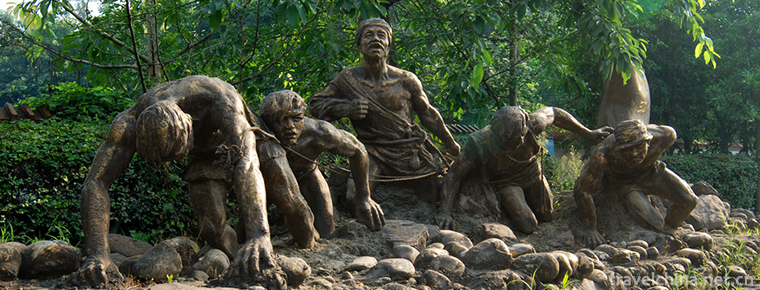
-
Alipay
Alipay (China) Network Technology Co., Ltd. is the third party payment platform in China. It is committed to providing a simple, safe and fast payment solution.
Views: 219 Time 2018-11-13 -
Legend of Meng Jiangnu
Meng Jiangnu's story, as one of the four love legends in ancient China (the other three are Niulang and Zhinu, Liang Shanbo and Zhu Yingtai, and The Legend of White Snake), has been widely circulated .
Views: 266 Time 2018-12-23 -
Mangdao Mountain Han Culture Tourist Scenic Spot
Located in Yongcheng City, Henan Province, Mangdao Mountain Han Culture Tourist Area is a national AAAAA-level scenic spot which integrates landscape sightseeing.
Views: 91 Time 2019-02-07 -
Fangte Fantasy Kingdom Scenic Spot in Qingdao City
Fangte Fantasy Kingdom of Qingdao is located in Lannan Road, Hongdao Street, Hongdao Hi-tech Zone, Qingdao City, Shandong Province. It is the core high-tech cultural amusement .
Views: 177 Time 2019-02-07 -
Iron Coal Steam Locomotive Museum
Tiaobingshan Steam Locomotive Museum, formerly known as Iron Coal Steam Locomotive Museum. National AAAA-level scenic spots and national industrial tourism demonstration sites.
Views: 189 Time 2019-02-22 -
Batik art
Miao batik technology, the traditional handicraft of Danzhai County, Guizhou Province, is one of the national intangible cultural heritage..
Views: 112 Time 2019-05-10 -
Lishui Shipmans Chant
Lishui Shipman's Chant is a unique work chant transformed from local minor. It is a kind of traditional folk music with strong rhythm, which reflects the hard life of the shipmen and the work scene in.
Views: 127 Time 2019-05-13 -
Legend of Liu Bowen
Liu Bowen's legend is based on the traditional folk oral literature of Liu Ji, a historical figure, spread throughout the whole country in eastern Zhejiang, with Qingtian, Wencheng and other southern .
Views: 364 Time 2019-05-13 -
March 3 She Nationality
March 3rd is the traditional festival of She nationality. Every year in this festival, a grand song is held, and ancestors worship Valley God, singing and dancing. It is very lively. In addition, we h.
Views: 183 Time 2019-06-14 -
Zhuang medicine thread moxibustion therapy
Zhuang medicine is the traditional medicine of the Zhuang people. It is a national traditional medicine based on the ancient Luoyue culture and Lingnan culture, with Yin and Yang as its foundation, Qi.
Views: 166 Time 2019-08-16 -
Chen Duxiu May Fourth leader
Chen Duxiu (October 9, 1879 -1942 May 27th), formerly known as "Qing Tong", the official name is "Sheng Sheng", "Zhong Fu", "Shi Shi". Anhui Huaining (now Anqin.
Views: 131 Time 2019-09-07 -
Leshan economy
In 2019, Leshan's GDP will reach 186.331 billion yuan, an increase of 7.6% over the previous year in terms of comparable prices. The industrial value increased by 24.288 billion yuan, with an increase of 24.288 billion yuan in the first value, and the second.
Views: 334 Time 2020-12-17

